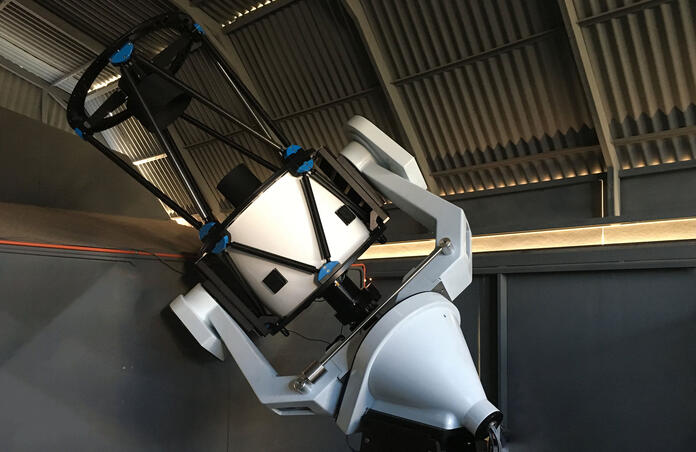Acquisition and Mergers in the Advanced Request

Acquisitions
Advanced Requests allow the user to be part of the acquisition process. That is, gathering the raw images often referred to as data by inputting the parameters that direct the telescope.
At least you can do it from the comfort of your desk, instead of freezing your butt of outside in the cold night.
In addition, you have access to hundreds of thousands of dollars of equipment that is kept in prime condition. No wobbly tripods, poor polar alignment, or manual guiding to ruin your shots. These telescopes are beasts bolted to concrete piers and under meticulous control of the pointing, guiding, and exposure software.
In Advanced Requests, you will fill in some key information about your observing session. That is, the target (you must point at something). This can be done by specifying any of the conventional designations Messier number, NGC, IC, and better yet, by common name. Type in “Orion Nebula”, and you don’t have to remember that it is M42. The system calls up the Right Ascension (RA) and Declination (DEC) from a database and populates the coordinates for you. You can enter RA and DEC manually, to point to anywhere in the celestial hemisphere. (Maybe even discover something new?) The next step is to choose a telescope, a list of available scopes will be presented. You should do a little bit of pre-planning to figure out the size of your object and location in the frame.
The Field-of-View (FOV) is listed in arcminutes, a quick reference in Wikipedia to the object, can give you its size. The smaller the FOV, the greater the magnification, and hence the larger the object will appear in the frame.
A neat little visualization too is available at https://ruuth.xyz/AstroMosaic.html by Jarmo Ruuth of this community.
Next, you choose your filters and exposure times and then finally, schedule the observing session.
All along, it calculates how much it is going to cost in credits. You can change the settings to fit your budget.
So, that’s the acquisitions part.
Telescope Live has made it easy to forget that there are a whole lot of steps that go into acquiring the image frames we need to create beautiful astrophotographs. You might even see some vague references scattered about the site. Under Advanced Requests, you will see “Calibration Frames.” These frames include Bias, Dark and Flat field frames used to calibrate the images that are delivered to you from the Image Archive. TelescopeLive does the calibration process when delivering images to you.
Those that wish to endure the tedious task of applying calibration frames and keeping full control over the final product, can process the raw images themselves.
Mergers
Now comes the (arguably) fun part. Seeing the final full-color image.
After acquiring the images, they must be downloaded and processed. Processing requires stacking, or merging of the image files. You take a handful of files in each of the filter colors and clean them of hot and cold pixels, linear streaks, and other artifacts. This may require several passes and trial and error to get just the right results.
Once the individual subframes are cleaned and aligned, they are typically merged into one frame for each color. This is known as integration and may consist of as few as three frames up to as many as can be acquired. Acquistion can take place over many nights (like multiple One-Click requests) and the more frames you have , the stronger the signal becomes, and the easier it is for the integration to statistically get rid of noise and remaining artifacts.
Finally, the integrations are combined to show the fully developed picture.
Ah! But don’t stop there with a little more magic in your software of choice, colors can be saturated, contrast enhanced, and an artistic hand (with license) allows you to be the artist with the ultimate say in what looks good.
Do you like doing the acquisitions and having ultimate control, or do you like the ease of the mergers and post-processing?
This blog post was originally published in our Telescope Live Community.
The Community represents Telescope Live's virtual living room, where people exchange ideas and questions around astrophotography and astronomy.
Join the conversation now to find out more about astrophotography and to improve your observation and post-processing skills!
